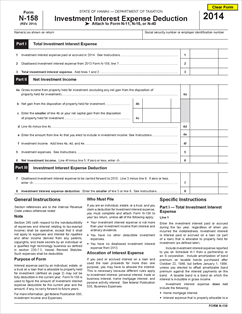
For example, an investment that offers daily compounding interest earns more than an investment that offers quarterly compounding interest. Yes, a compound interest calculator can be used for various investment options in India, such as fixed deposits, how to calculate owner’s equity mutual funds, and recurring deposits. Fixed Deposits (FD) are one of India’s most popular and safe investment options. Fixed Deposits are a type of investment where you deposit a sum of money with a bank or financial institution for a fixed period.
Compound Interest Calculator India – Power of Compounding
Efiling Income Tax Returns(ITR) is made easy with Clear platform. Just upload your form 16, claim your deductions and get your acknowledgment number online. You can efile income tax return on your income from salary, house property, capital gains, business & profession and income from other sources. Further you can also file TDS returns, generate Form-16, use our Tax Calculator software, claim HRA, check refund status and generate rent receipts for Income Tax Filing. If, Rs.10000 will be deposited for 5 years at a Simple interest rate of 8% p.a, so the maturity amount will be Rs.140,000. If we apply the same condition only the interest will be compounded with yearly frequency, so the maturity amount will be Rs.1,46,932.
Human Life Value Calculator
Say you’ve invested ₹5,00,000 in a Fixed Deposit that compounds interest quarterly. In conclusion, compound interest can work in your favour while investing, allowing your money to grow over time. Starting early allows your investments more time to compound, maximising your returns.
- Also, longer the investment tenure higher is the wealth accumulated.
- It’s a tool designed to help you understand the power of compounding interest.
- In the first year, the principal amount would be Rs 1,000, and the investment instrument will provide Rs 80 as the interest amount for the first year.
- On the other hand, compound interest is more dynamic and powerful.
Compound Interest Calculator
The frequency of compounding determines the rate at which compound interest accumulates. For example, over the same period, the compound interest accrued on Rs. 1,000 compounded at 10% annually will be less than that on Rs. 1,000 compounded at 5% semi-annually. Compound interest, also known as compounding interest, is accumulated interest that is added to the principal amount invested to calculate the interest on a deposit.
It is also important to reinvest the earned interest instead of withdrawing it to maximise the effect of compounding. You can use the BankBazaar compound interest calculator to know the total interest that will earned on a particular investment. All you need to do is to choose the investment amount, the interest rate and the time period for which you are putting in your money. Therefore, X’s investment of INR 5 lakh in five years will grow to INR 6.25 lakh at 5% rate of interest per annum using the simple interest formula.

Will you be making the regular payments for 5 years, 10 years or 25 years? You can either move the slider or simply input the number of years in the provided box. Now that you know the compound interest formula let’s use it to calculate compound interest.
If you’rereceiving 6% then your money will double in about 12 years. If you want to roughly calculate compound interest on a savings figure, without using https://www.quick-bookkeeping.net/profitability-index-calculator/ a calculator, you can use a formula calledthe rule of 72. The rule of 72 helps you estimate the number of years it will take to double your money.
It reinvests the interest earned so that for the next period we earn interest on the principal amount plus the previous interest earned. Compound interest calculates the total interest earned for the investment compounded for the different tenures and frequency. Compound interest investments are a type of investment where the interest earned on the principal amount is added to the principal. In other words, instead of earning interest only on the initial investment, the investor earns interest on the accumulated total, which includes the principal and the interest earned on it.
Compound interest is the interest charged on the loan amount or the deposit amount adding the interest earned in the previous term. The calculation of the compound interest differs from that of the simple interest. For example, with daily compounding, the interest will be accrued daily. With monthly compounding, it will accrue monthly, and with yearly, it will accrue once a year. When you calculate compound interest through the formula or using a compound interest calculator, you will see that the calculation includes accumulated interest for future calculations.
This is because the interest of your invested money is also earning interest. The value of the investment keeps growing at a geometric rate (always increasing) than at an arithmetic rate (straight-line). Also, if paying interest is ignored, or if there is any delay in paying the loan, then the interest burden will surely be high. Also, to take advantage of compounding, one has to increase the frequency of loan payments.
However, since the interest doesn’t compound, the overall growth of the investment istypically slower compared to compound interest. The compound interest formula is simple and involves four variables P,R,N,n. The P in the formula stands for the principal amount of the investment, and R stands for the interest rate. The N in the formula stands for the total number of times the interest is compounded ,and n stands for compounding frequency per year.
A compound interest calculator is a tool that is used to calculate the total interest that will be earned on an investment. This tool is very convenient and easy to use and gives consumers the actual rate of return on an investment. This will help any prospective investor see how compound interest will grow their money. The tool is also advantageous because an investor can make a decision on how much he/she has to invest in order to reach a financial/investment goal. There are a number of benefits of using a compound interest calculator, let us understand some of them.
You may, for example, want to include regular deposits whilst also withdrawing a percentage for taxation reporting purposes. Or,you may be considering retirement and wondering how long your money might last with regular withdrawals. The more frequently compounding occurs, the greater the future value because compound interest is calculated on the initial principal and also on the accumulated past interest. https://www.online-accounting.net/ Regardless of how you choose to utilize it, understanding compounding can help you make the most of your financial resources and achieve your long-term financial goals. Understand the power of compounding with the help of Pocketful’s compound interest calculator. Compound interest investments are those investment instruments that provide compound interest to the investors rather than offer simple interest.
Components of compound interest are principal amount, rate of interest, period, and frequency of compounding. The total interest earned is relatively higher with compound interest and therefore favourable for investors. Step 2- Enter Expected Rate of ReturnHere, you will have to enter the expected rate of return on the investment. Mutual Funds are one of the most incredible investment strategies that offer better returns… If you include regular deposits or withdrawals in your calculation, we switch to provide you with a Time-Weighted Return (TWR) figure. ICICIdirect.com is a part of ICICI Securities and offers retail trading and investment services.

There are several benefits of using a compound interest calculator in India. Here’s a simple breakdown of the formula for your easier understanding. It is important that you understand how an interest calculator works for you to know how much you’ve saved and how much you’ve accumulated interest for the amount saved over the years. The below table illustrates how interest is earned when the interest is compounded. The calculation is generated on the basis of information provided and does not constitute an offer or solicitation for the purpose of purchase or sale of any product.












Leave a reply